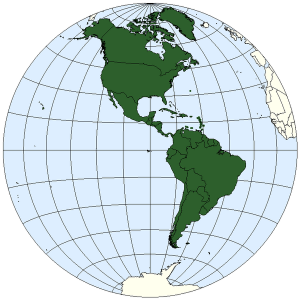NewsDesk @bactiman63
In its epidemiological update on yellow fever, the Pan American Health Organization (PAHO) warns that, in the Region of the Americas, the risk of new outbreaks of the disease of varying magnitudes is high.

Public domain image/ E Pluribus Anthony
So far this year, 2023, there have been five human cases of the disease, in Brazil and Bolivia, with no history of vaccination. Among the identified cases, two died.
In Bolivia, two positive cases of yellow fever were detected in the Municipality of Santa Ana de Yacuma, Beni department. This is a nine-year-old boy, with no history of vaccination against yellow fever and no recent trips outside the municipality. The patient was discharged and is recovered and in good general health, according to the report.
Additionally, a second positive case of the disease was detected in the municipality of Puerto Suárez, department of Santa Cruz, on the border with Brazil. This is a 17-year-old patient, with no history of vaccination, who was serving in the military. The patient died of brain hemorrhage and liver failure.
In Brazil, three cases of yellow fever in humans were confirmed, in the states of São Paulo (2) and Amazonas (1), including one death (São Paulo). Of the three confirmed cases, all had a history of exposure to wild and/or wooded areas, due to work and/or leisure activities.
On the other hand, in Peru, four probable cases of yellow fever were reported, still under investigation.
Getting vaccinated against yellow fever is safe and affordable
PAHO reiterates the importance of getting vaccinated. The yellow fever vaccine provides effective immunity against the disease to vaccinated persons, between 80 and 100% after 10 days, and 99% immunity after 30 days.
A single dose is sufficient to confer immunity and protection for life, without the need for a booster dose.

PAHO/WHO reiterates:
1. Universal vaccination of children in endemic countries at 12 months of age, administered concurrently with measles, mumps, and rubella (MMR) vaccine.
Subscribe to Outbreak News TV on YouTube
2. Endemic countries with programmed follow-up campaigns for measles/rubella in children under five years of age should take the opportunity to integrate vaccination against yellow fever and administer these two vaccines simultaneously.
Argentina approves Qdenga dengue vaccine
3. Update the risk assessment and the estimate of the susceptible population, taking into account changes in ecological factors, migration, vaccination coverage, socioeconomic activities, as well as the risk of urbanization, to guide vaccination and control measures.
4. Vaccination of the population of risk areas, reaching at least 95% coverage in residents of these areas (urban, rural and jungle), through different strategies:
• At the intramural level, make rational use of the vaccine and avoid missed opportunities for vaccination.
US Embassy in Costa Rica issues health alert due to malaria outbreak
• At the extramural level, when there is greater availability of yellow fever vaccine, countries should carry out updating campaigns, identifying under-vaccinated populations, professional and occupational risk groups, and age groups with suboptimal coverage, for example, men. young people who do not readily accept vaccination.
5. Ensure vaccination of all travelers to endemic areas, at least 10 days before travel.
About yellow fever
Buenos Aires: Increase in ringworm infections linked to barbershops reported
Yellow fever is a viral disease transmitted to humans through the bite of infected mosquitoes of the Aedes and Haemagogus genera.
The symptoms of the disease are fever, headaches, jaundice, muscle aches, nausea, vomiting and tiredness. It can cause death.
There is no specific antiviral treatment for yellow fever. The vaccine is the most important preventive measure, it is safe and highly effective.
Mexico: Chagas disease cases up in Yucatan, Nationally
Brazil: 16 cities account for 80% of Plasmodium falciparum malaria cases

